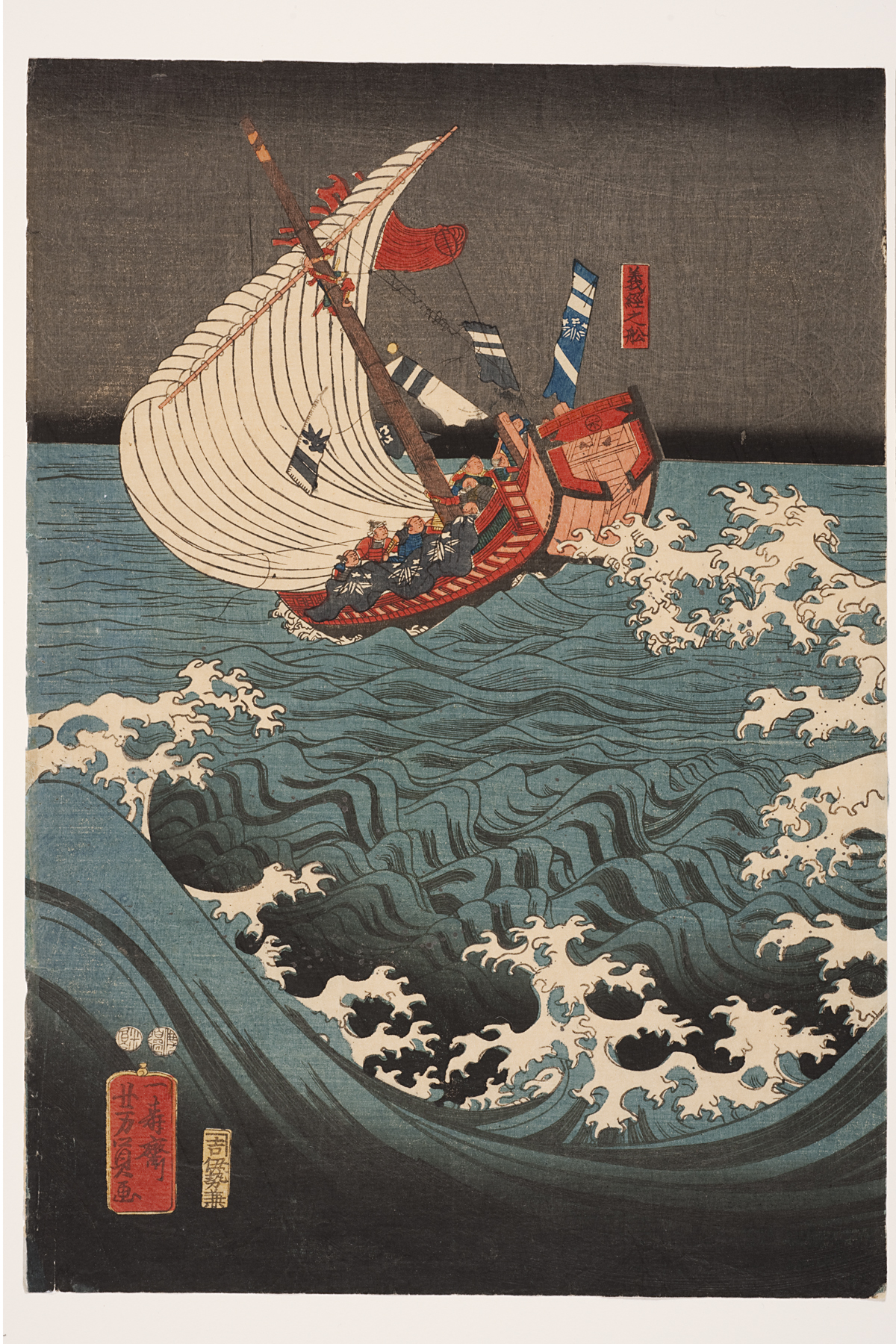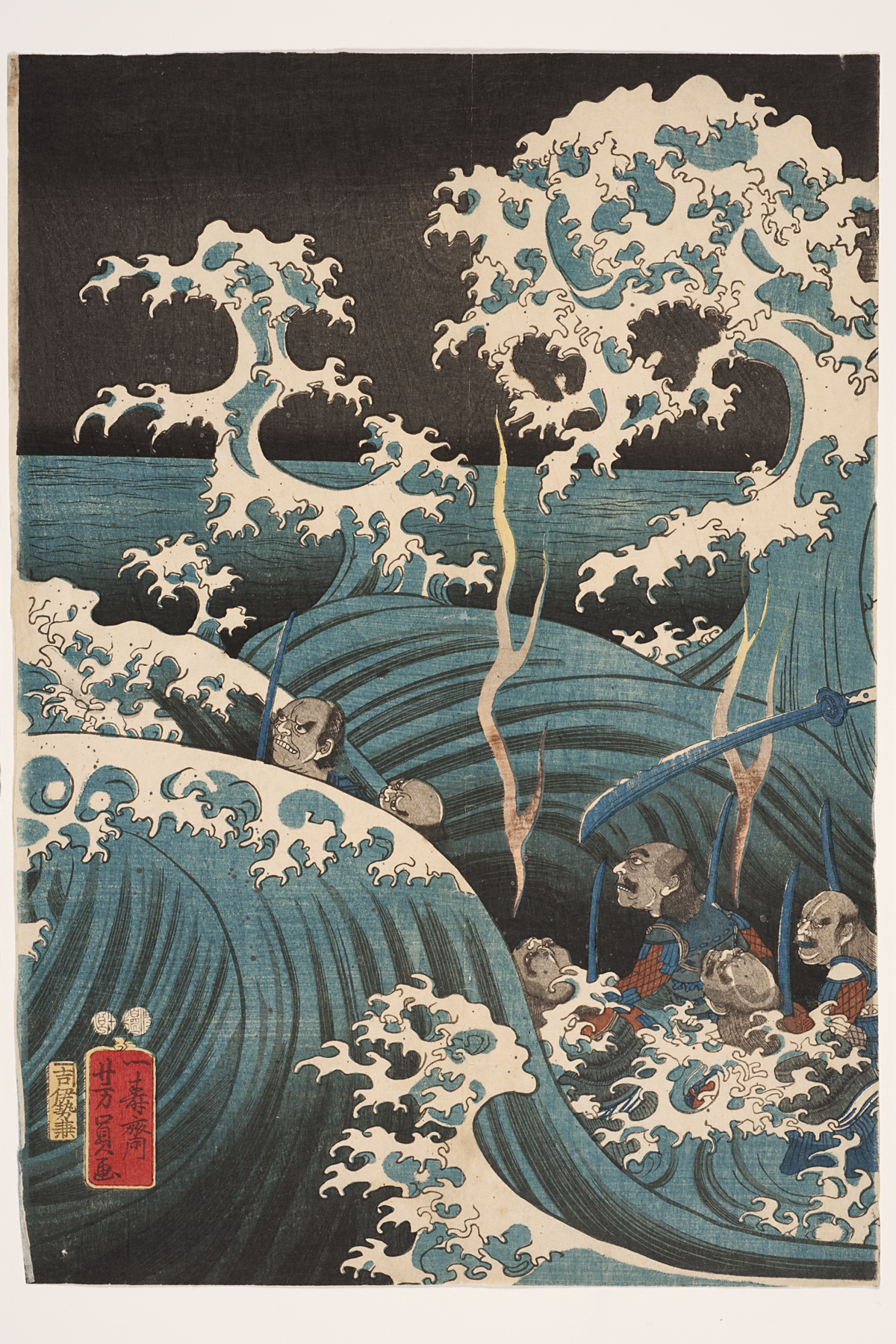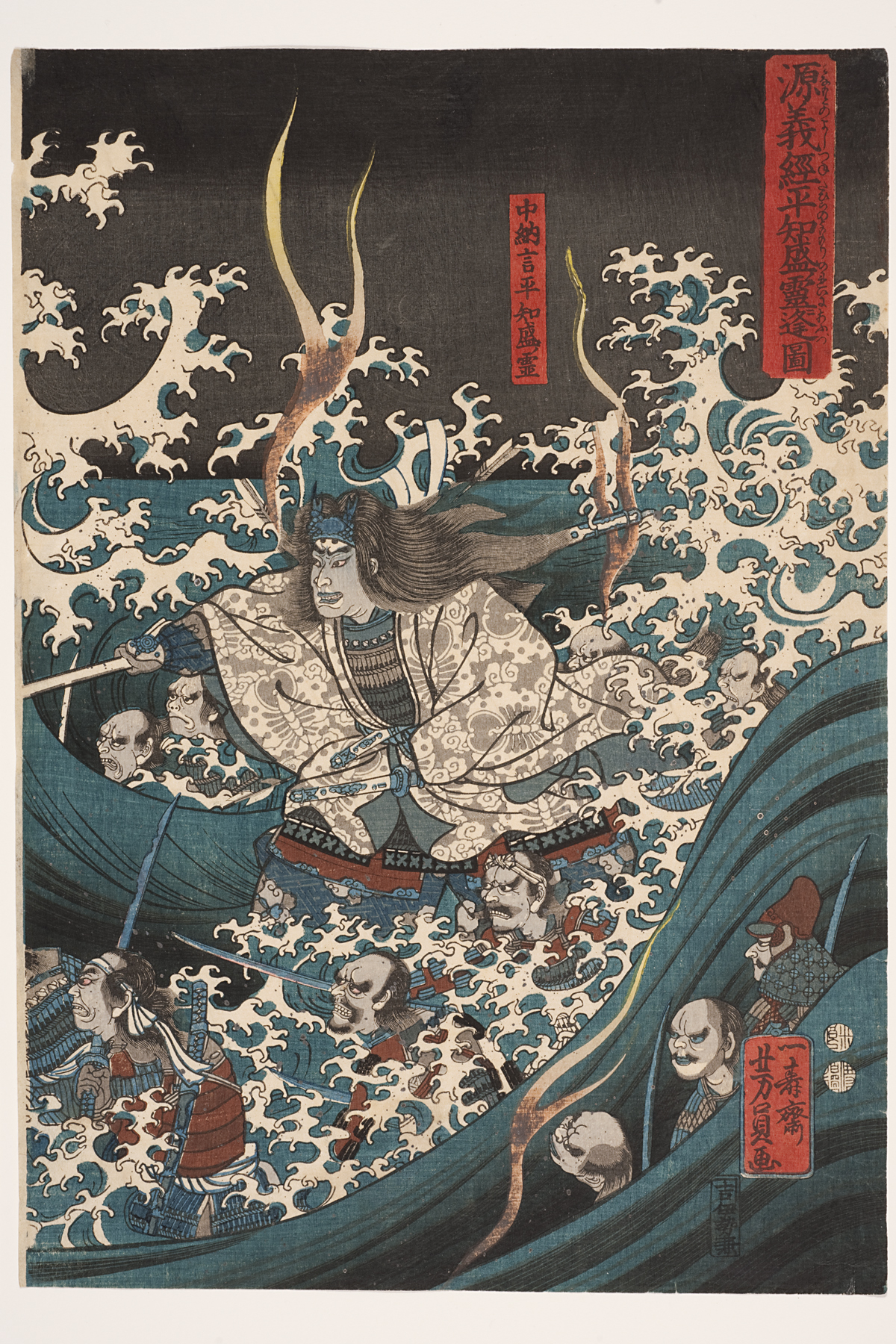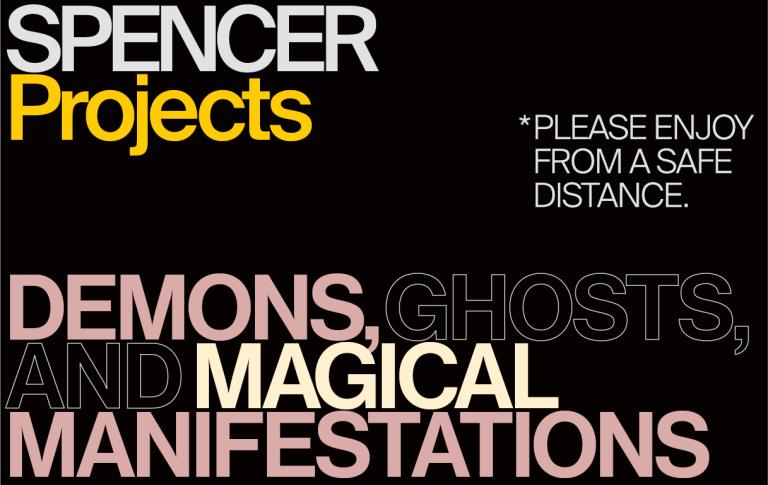Minamoto no yoshitsune taira no tomomori no rei ni au zu (Meeting of Minamoto no Yoshitsune and the ghost of Taira no Tomomori), Utagawa Yoshikazu
Artwork Overview
Utagawa Yoshikazu, artist
active 1850–1870
Minamoto no yoshitsune taira no tomomori no rei ni au zu (Meeting of Minamoto no Yoshitsune and the ghost of Taira no Tomomori),
circa 1851–1853, Edo period (1600–1868)
Where object was made: Japan
Material/technique: color woodcut
Dimensions:
Image Dimensions Height/Width (Height x Width): 363 x 766 mm
Sheet/Paper Dimensions (Height x Width): 363 x 766 mm
Sheet/Paper Dimensions (Height x Width): 14 5/16 x 30 3/16 in
Mat Dimensions (Height x Width): 19 x 36 in
Image Dimensions Height/Width (Height x Width): 363 x 766 mm
Sheet/Paper Dimensions (Height x Width): 363 x 766 mm
Sheet/Paper Dimensions (Height x Width): 14 5/16 x 30 3/16 in
Mat Dimensions (Height x Width): 19 x 36 in
Credit line: Museum purchase: R. Charles and Mary Margaret Clevenger Fund
Accession number: 1999.0203.a,b,c
Not on display
If you wish to reproduce this image, please submit an image request











